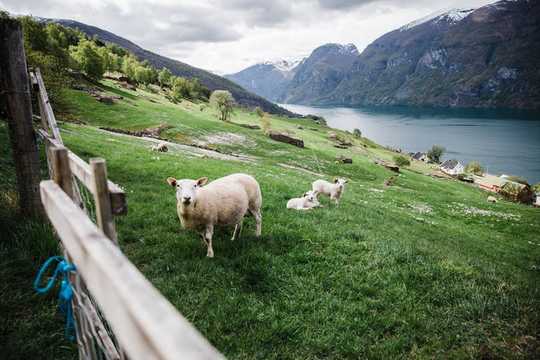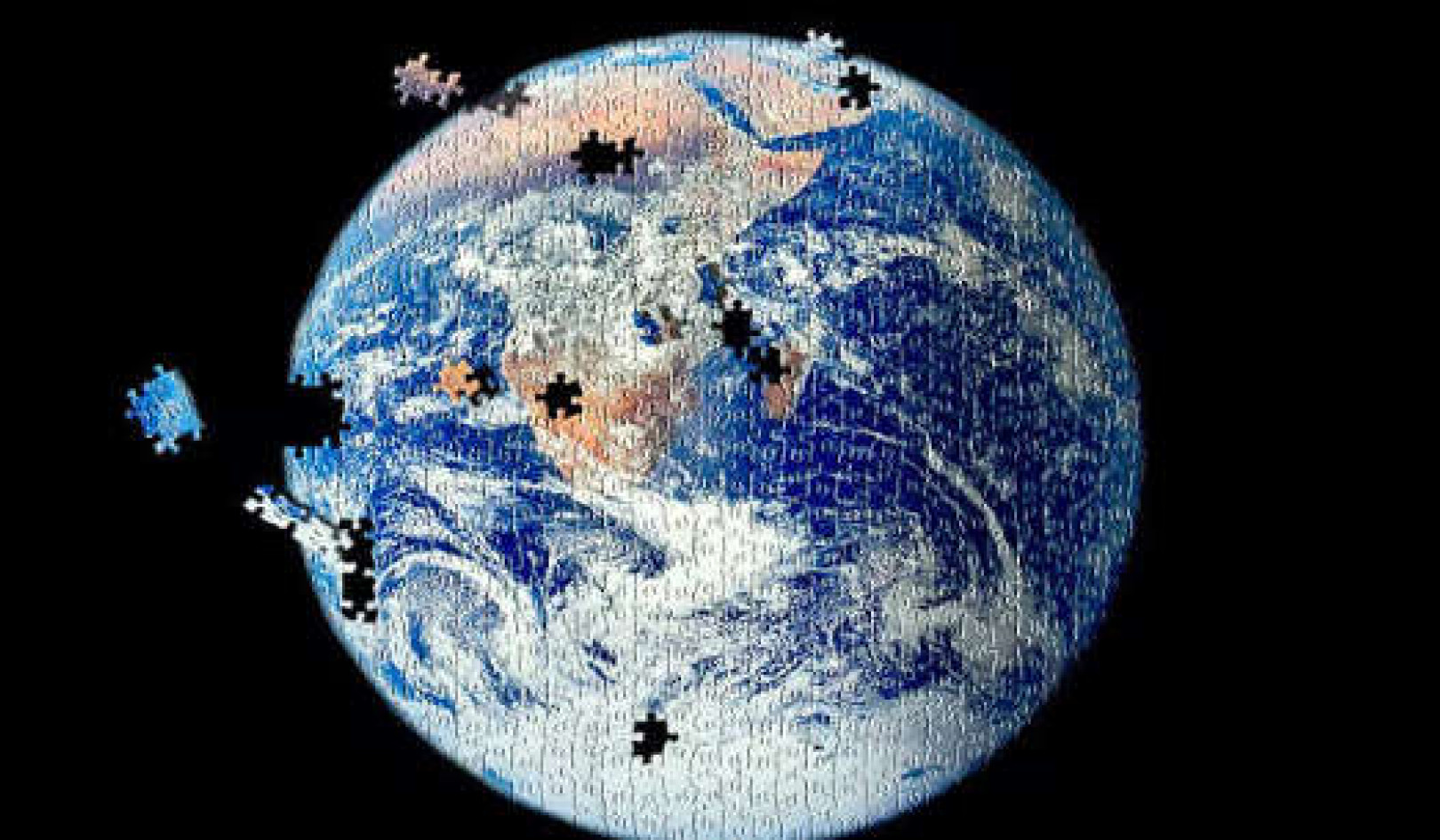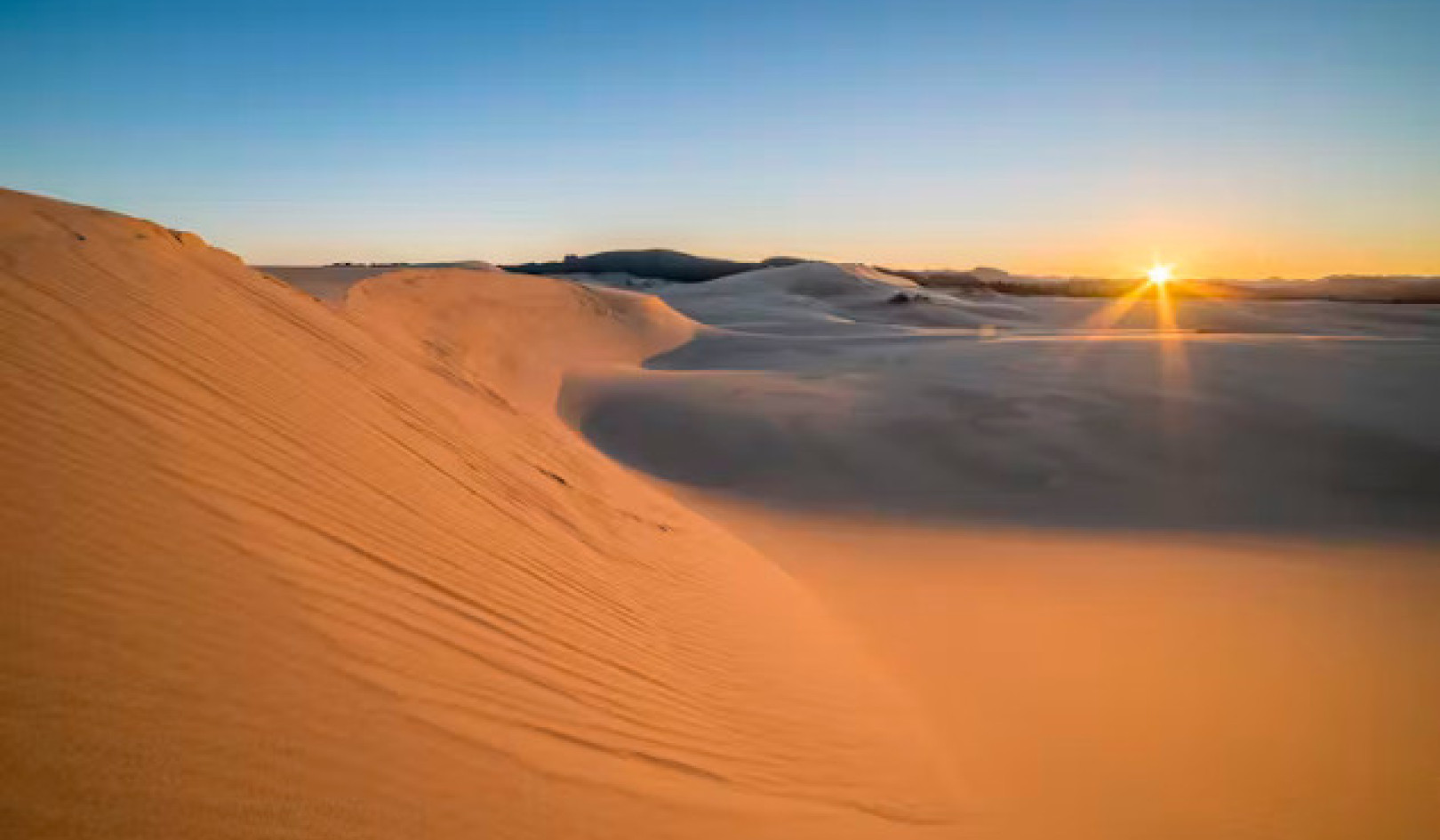 Nature and technology can combine to help farms of the future nourish the earth and its inhabitants. SimplyDay/Shutterstock
Nature and technology can combine to help farms of the future nourish the earth and its inhabitants. SimplyDay/Shutterstock
Intensive agriculture may be nourishing most of the Earth’s inhabitants, but it’s doing the opposite to earth itself. Its dependence on singular crops, heavy ploughing machinery, fossil-fuel based fertilisers and pesticides is degrading our soils wildlife and nutrient cycles, and contributing a quarter of the planet’s unwanted extra heat.
But we’re not powerless to change the future of food. Nature and technological innovation are tackling these problems head on – and if the solutions they’re offering are incorporated on a large scale and used together, a new agricultural revolution could be on its way. Here are three of the most exciting developments that can help farms not just feed the planet, but heal it too.
Crops, trees and livestock in harmony
Several UN reports have highlighted agroecology – farming that mimics the interactions and cycles of plants, animals and nutrients in the natural world – as a path to sustainable food.
The approach uses a wide variety of practices. For example, instead of artificial fertilisers, it improves soil quality by planting nutrient-fixing “cover crops” in between harvest crops, rotating crops across fields each season and composting organic waste. It supports wildlife, stores carbon, and conserves water through the planting of trees and wildflower banks.
It also integrates livestock with crops. This may seem counter-intuitive given their inefficient land use and high emissions. But having a small number of animals grazing land doesn’t have to accelerate global heating.
Grassland captures carbon dioxide. Animals eat the grass, and then return that carbon to the soil as excrement. The nutrients in the excrement and the continuous grazing of grass both help new grass roots to grow, increasing the capacity of the land to capture carbon.
 Carefully managed grazing can help the environment, not harm it. Millie Olsen/Unsplash, CC BY-SA
Carefully managed grazing can help the environment, not harm it. Millie Olsen/Unsplash, CC BY-SA
Keep too many grazing animals in one place for too long and they eat too much grass and produce too much excrement for the soil to take on, meaning carbon is lost to the atmosphere. But if small numbers are constantly rotated into different fields, the soil can store enough extra carbon to counterbalance the extra methane emitted by livestock’s digestive rumblings.
While this doesn’t make them a carbon sink, livestock bring other benefits to the land. They keep soil naturally fertilised, and can also improve biodiversity by eating more aggressive plants, allowing others to grow. And if local breeds are adopted, they generally don’t require expensive feed and veterinary care, as they’re adapted to local conditions.
Pesticides no more
Pests, diseases and weeds cause almost 40% of crop losses globally – and without care, the figure could rise dramatically. Climate change is shifting where pests and diseases thrive, making it harder for farmers to stay resilient.
Many commonly used herbicides, pesticides and fungicides are now also under pressure to be banned because of their negative effects on the health of humans and wildlife. Even if they’re not, growing resistance to their action is making controlling weeds, pests and diseases increasingly challenging.
Nature is again providing answers here. Farmers are starting to use pesticides derived from plants, which tend to be much less toxic to the surrounding environment.
They’re also using natural enemies to keep threats at bay. Some may act as repellents, “pushing” pests away. For example, peppermint disgusts the flea beetle, a scourge to oilseed rape farmers. Others are “pulls”, attracting pests away from valuable crops. Plants that are attractive for egg-laying but that don’t support the survival of insect larvae are commonly used for this purpose.
 Nasturtiums are pest magnets – and they’re edible too. Shutova Elena/Shutterstock
Nasturtiums are pest magnets – and they’re edible too. Shutova Elena/Shutterstock
Technology is also offering solutions on this front. Some farmers are already using apps to monitor, warn and predict when pest and diseases will attack crops. Driverless tractors and intelligent sprayers that can target specific weeds or nutritional needs have recently entered the market. Agritech companies are now also developing robots that can scan fields, identify specific plants, and decide whether to use pesticide or to remove a plant mechanically.
In combination, these methods can dramatically reduce agriculture’s reliance on herbicides and pesticides without lowering crop yields. This is important, since the world’s population is set to rise by a quarter in the next three decades.
Small tech, big difference
Soon, technology at an almost impossibly small scale could make a big difference to the way we grow our food. Companies have designed nanoparticles 100,000 times smaller then the width of a human hair that release fertiliser and pesticides slowly but steadily, to minimise their use and maximise crop yields.
New gene-editing techniques will also increasingly use nanomaterials to transfer DNA to plants. These techniques can be used to detect the presence of pests and nutrient deficiencies, or simply improve their resistance to extreme weather and pests. Given that increasingly frequent and severe extreme weather events due to global heating are putting the very functioning of the global food system at risk, these advancements could be vital for preventing agricultural collapse.
Nanotechnologies aren’t cheap yet and researchers have yet to conduct rigorous tests of how toxic nanomaterials are to humans and plants, and how durable they are. But should they pass these tests, agriculture will surely follow the path of other industries in adopting the technology on a large scale.
Save for nanotechnology and advanced robots, the above solutions are already in use in many small-scale and commercial farms – just not in combination. Imagine them working in synchrony and suddenly a vision of sustainable agriculture doesn’t seem so far away anymore.
About The Author
Karen Rial-Lovera, Senior Lecturer in Agriculture, Nottingham Trent University
This article is republished from The Conversation under a Creative Commons license. Read the original article.
Related Books
Drawdown: The Most Comprehensive Plan Ever Proposed to Reverse Global Warming
by Paul Hawken and Tom Steyer In the face of widespread fear and apathy, an international coalition of researchers, professionals, and scientists have come together to offer a set of realistic and bold solutions to climate change. One hundred techniques and practices are described here—some are well known; some you may have never heard of. They range from clean energy to educating girls in lower-income countries to land use practices that pull carbon out of the air. The solutions exist, are economically viable, and communities throughout the world are currently enacting them with skill and determination. Available On Amazon
In the face of widespread fear and apathy, an international coalition of researchers, professionals, and scientists have come together to offer a set of realistic and bold solutions to climate change. One hundred techniques and practices are described here—some are well known; some you may have never heard of. They range from clean energy to educating girls in lower-income countries to land use practices that pull carbon out of the air. The solutions exist, are economically viable, and communities throughout the world are currently enacting them with skill and determination. Available On Amazon
Designing Climate Solutions: A Policy Guide for Low-Carbon Energy
by Hal Harvey, Robbie Orvis, Jeffrey Rissman With the effects of climate change already upon us, the need to cut global greenhouse gas emissions is nothing less than urgent. It’s a daunting challenge, but the technologies and strategies to meet it exist today. A small set of energy policies, designed and implemented well, can put us on the path to a low carbon future. Energy systems are large and complex, so energy policy must be focused and cost-effective. One-size-fits-all approaches simply won’t get the job done. Policymakers need a clear, comprehensive resource that outlines the energy policies that will have the biggest impact on our climate future, and describes how to design these policies well. Available On Amazon
With the effects of climate change already upon us, the need to cut global greenhouse gas emissions is nothing less than urgent. It’s a daunting challenge, but the technologies and strategies to meet it exist today. A small set of energy policies, designed and implemented well, can put us on the path to a low carbon future. Energy systems are large and complex, so energy policy must be focused and cost-effective. One-size-fits-all approaches simply won’t get the job done. Policymakers need a clear, comprehensive resource that outlines the energy policies that will have the biggest impact on our climate future, and describes how to design these policies well. Available On Amazon
This Changes Everything: Capitalism vs. The Climate
by Naomi Klein In This Changes Everything Naomi Klein argues that climate change isn’t just another issue to be neatly filed between taxes and health care. It’s an alarm that calls us to fix an economic system that is already failing us in many ways. Klein meticulously builds the case for how massively reducing our greenhouse emissions is our best chance to simultaneously reduce gaping inequalities, re-imagine our broken democracies, and rebuild our gutted local economies. She exposes the ideological desperation of the climate-change deniers, the messianic delusions of the would-be geoengineers, and the tragic defeatism of too many mainstream green initiatives. And she demonstrates precisely why the market has not—and cannot—fix the climate crisis but will instead make things worse, with ever more extreme and ecologically damaging extraction methods, accompanied by rampant disaster capitalism. Available On Amazon
In This Changes Everything Naomi Klein argues that climate change isn’t just another issue to be neatly filed between taxes and health care. It’s an alarm that calls us to fix an economic system that is already failing us in many ways. Klein meticulously builds the case for how massively reducing our greenhouse emissions is our best chance to simultaneously reduce gaping inequalities, re-imagine our broken democracies, and rebuild our gutted local economies. She exposes the ideological desperation of the climate-change deniers, the messianic delusions of the would-be geoengineers, and the tragic defeatism of too many mainstream green initiatives. And she demonstrates precisely why the market has not—and cannot—fix the climate crisis but will instead make things worse, with ever more extreme and ecologically damaging extraction methods, accompanied by rampant disaster capitalism. Available On Amazon
From The Publisher:
Purchases on Amazon go to defray the cost of bringing you InnerSelf.comelf.com, MightyNatural.com, and ClimateImpactNews.com at no cost and without advertisers that track your browsing habits. Even if you click on a link but don't buy these selected products, anything else you buy in that same visit on Amazon pays us a small commission. There is no additional cost to you, so please contribute to the effort. You can also use this link to use to Amazon at any time so you can help support our efforts.























